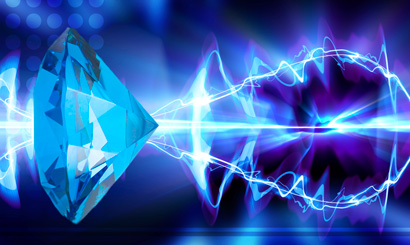
Posted on 08/11/2011 10:03:00 PM PDT by neverdem
Researchers in South Korea and the UK have produced a film that makes electricity when you bend it - and crucially it is over a million times better at this than other crystalline solids with the same properties. Their approach makes it possible to control the strength of permanent electric fields in designer films, which is required for devices like photovoltaics.
Piezoelectric materials generate electric fields when pressed or pulled. In contrast, flexoelectric materials produce these fields when bent - they react to variation in strain across the material, rather than strain itself. But because solids are typically difficult to bend, the effect is generally too small to be useful.
Now, rather than trying to bend a crystal, Tae Won Noh of Seoul National University and his colleagues have built the strain gradient directly into a thin film of holmium manganese oxide (HoMnO3). The material is permanently under strain, as if it were being deformed, in its normal state. This approach has produced a flexoelectric effect over a million times larger than that observed in solid crystals. And the key to controlling the strain gradient - and so tuning the strength of the effect - is the amount of oxygen available during the formation of the layers.

|
Sapphire's crystal lattice helps build strain into the holmium manganese oxide film as it is assembled
|
The team deposited HoMnO3 onto sapphire, which has a wider crystal lattice spacing than the metal oxide. The mismatch stretches the HoMnO3 layers nearest to the sapphire, building in a strain that diminishes the further away from the sapphire the material gets. This strain gradient creates a separation of charge in the film, and this dipole generates an electric field just as a dipole magnet generates a magnetic field.
The strain can be built into the film when oxygen is relatively plentiful; however, in low oxygen conditions, the aluminium oxide in sapphire is more likely to lose oxygen, leaving vacancies in the lattice. Likewise, oxygen vacancies accumulate in the layers of HoMnO3, resulting in a lattice larger than sapphire's. These structures, revealed by x-ray diffraction, gave the high-oxygen film an internal electric field over seven times greater than that of the low-oxygen film.
Sergei Kalinin, an expert in nanomaterials at Oak Ridge National Laboratory in Tennessee, suggests that the flexoelectric effect isn't restricted to the nanoscale. The electrical polarisation arises at the interface between the HoMnO3 and sapphire, but this influence can then create larger areas with a permanent electrical polarisation, called defect dipoles. 'Hence, the nanoscale effect becomes highly relevant to the overall behaviour of the system,' he notes.
'Many electronic applications such as diodes and photovoltaics are based on the built-in internal electric field,' says co-author Daesu Lee, also of Seoul National University. Although rather complex structures are currently needed to make this film, he says, 'we can easily generate the electric field just in a single material structure'.
Holmium is a rare earth element. Nice if we had plenty of it.
bflr
I wish I understood what all of that meant. All I can think of is Dilithium crystals and Star Trek.
I wish I understood what all of that meant. All I can think of is Dilithium crystals and Star Trek.
The first thing I thought of was clothing that powers your portable equipment as you wear it and move it continuously generates electricity.
This would be a boon for modern soldiers who need to carry a lot of batteries in addition to everything else they use while in the field.
Low vitamin D linked to earlier first menstruation, a risk factor...health problems throughout life
Tufts-Harvard study builds vitamin D's anti-diabetes potential
Antimatter Belt Found Circling Earth
FReepmail me if you want on or off my health and science ping list.
Now, rather than trying to bend a crystal, Tae Won Noh of Seoul National University and his colleagues have built the strain gradient directly into a thin film of holmium manganese oxide (HoMnO3). The material is permanently under strain, as if it were being deformed, in its normal state. This approach has produced a flexoelectric effect over a million times larger than that observed in solid crystals. And the key to controlling the strain gradient -- and so tuning the strength of the effect -- is the amount of oxygen available during the formation of the layers.

Disclaimer: Opinions posted on Free Republic are those of the individual posters and do not necessarily represent the opinion of Free Republic or its management. All materials posted herein are protected by copyright law and the exemption for fair use of copyrighted works.